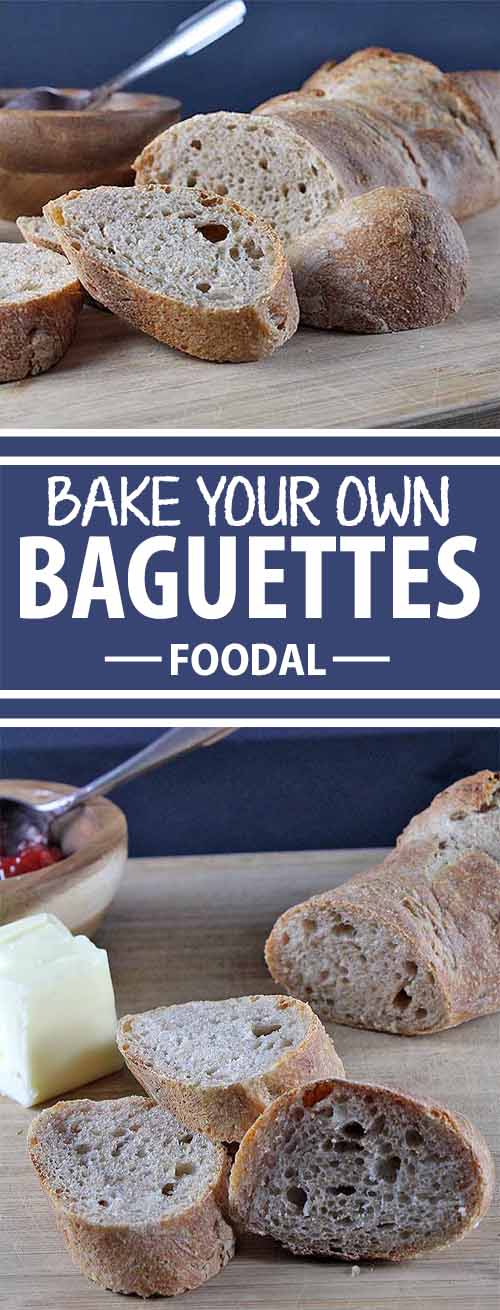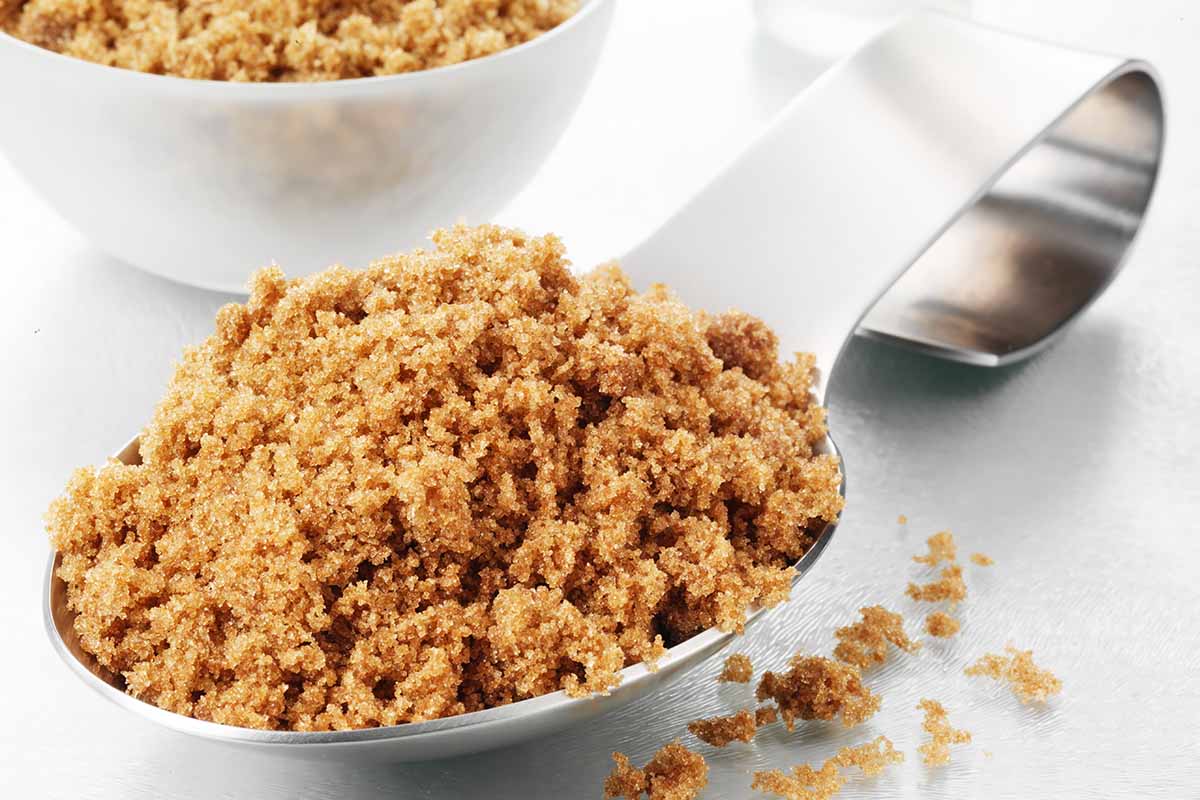My favorite part of sourdough bread is the sweet and chewy crust.
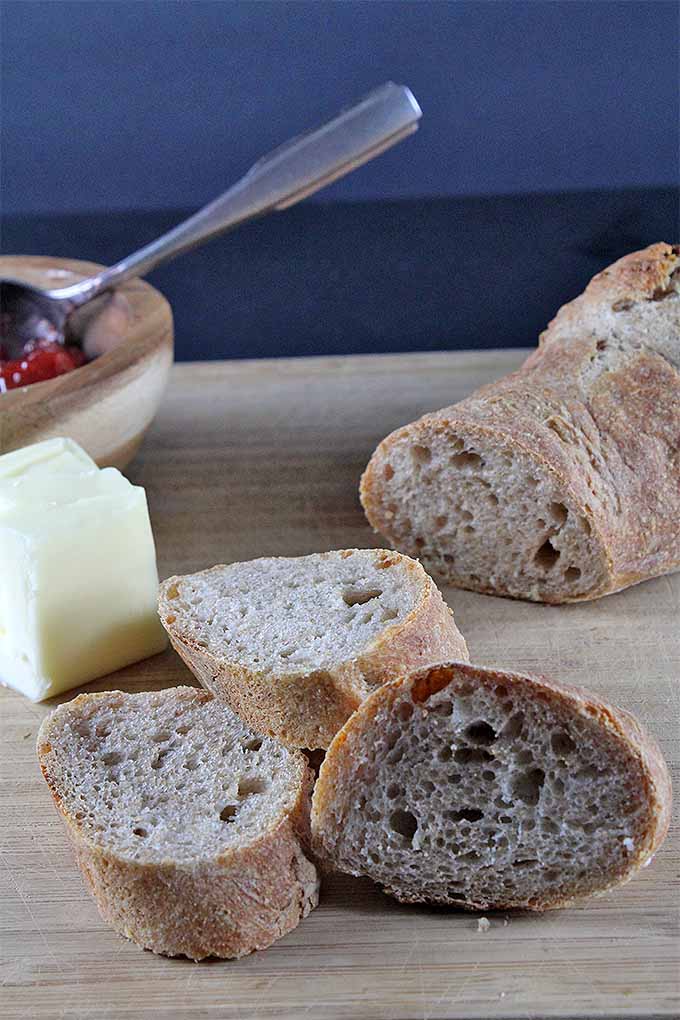
There’s nothing better than the crackling sound it makes and the dusting of crumbs that fall when you tear into a tangy loaf.
While the edges of a large boule (round loaf) are nice, the long, thin baguette offers more surface area, packing a flavorful punch.
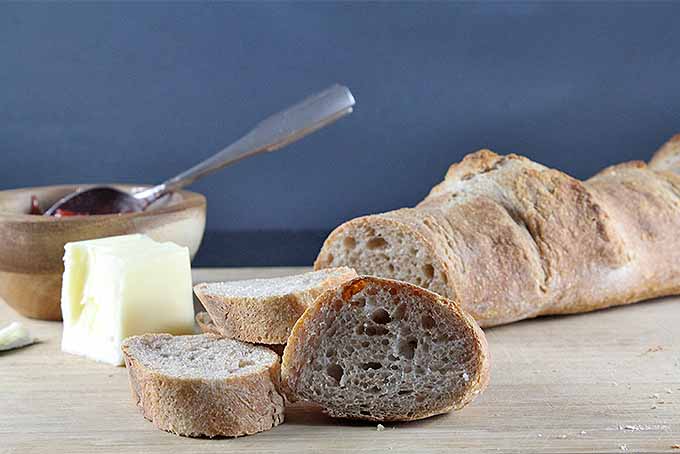
There are a few different stories as to how this iconic French loaf came to be. Some say Napoleon demanded bread that could be carried in soldiers’ trousers.
Most likely, however, the loaf truly began to gain popularity in 1920, when a law was passed saying that no bakers could start work before 4 a.m. In order to serve something in time for breakfast, bakers turned to the quick rise and short bake of the long, thin baguette.
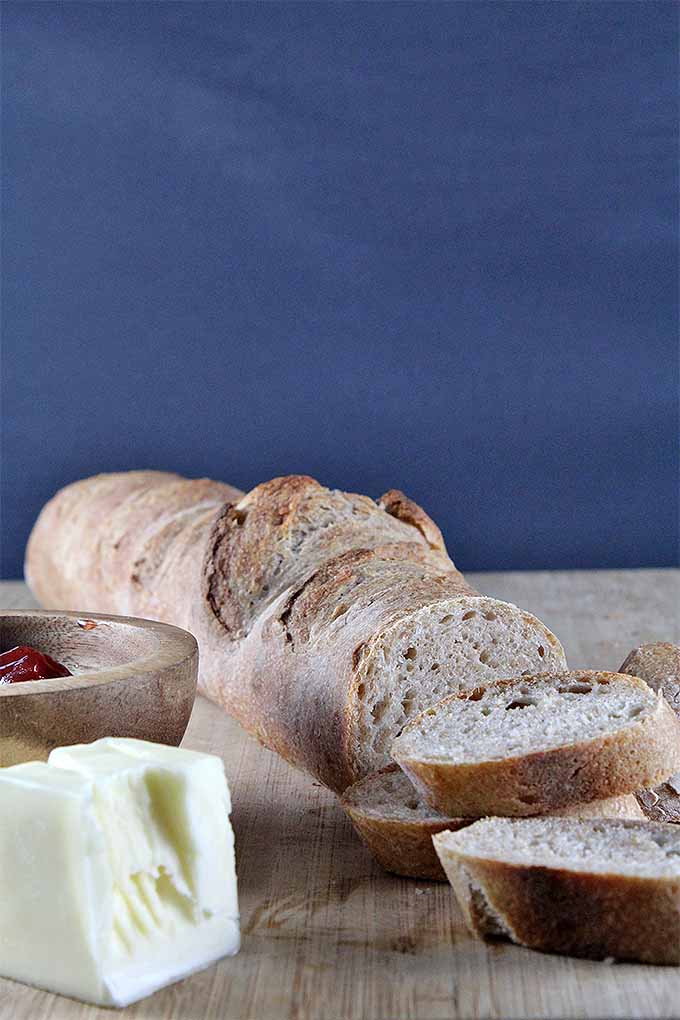
Shaping a baguette is much simpler than you might think. It’s really simple to make at home, in the time that it takes to make just a few extra folds.
To take the baguette one step further, you can turn it into a style called an epi, shaped to look like a stalk of wheat (and offering even more of that delicious crust).
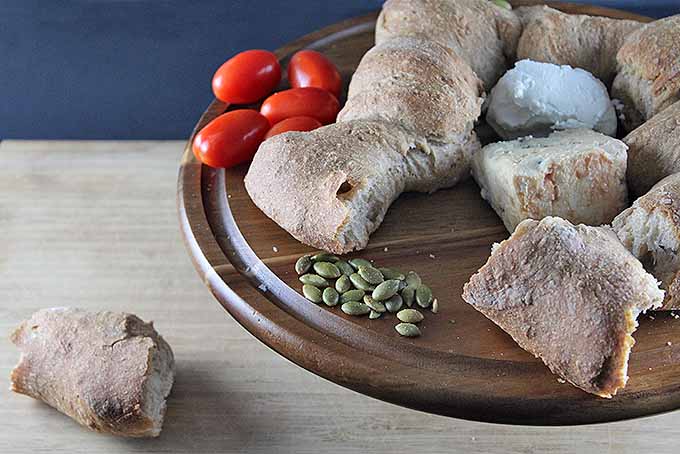
I like to wrap my epi into a wreath to serve at dinner parties. You can serve it around a bowl of dip or a plate of cheese, too.
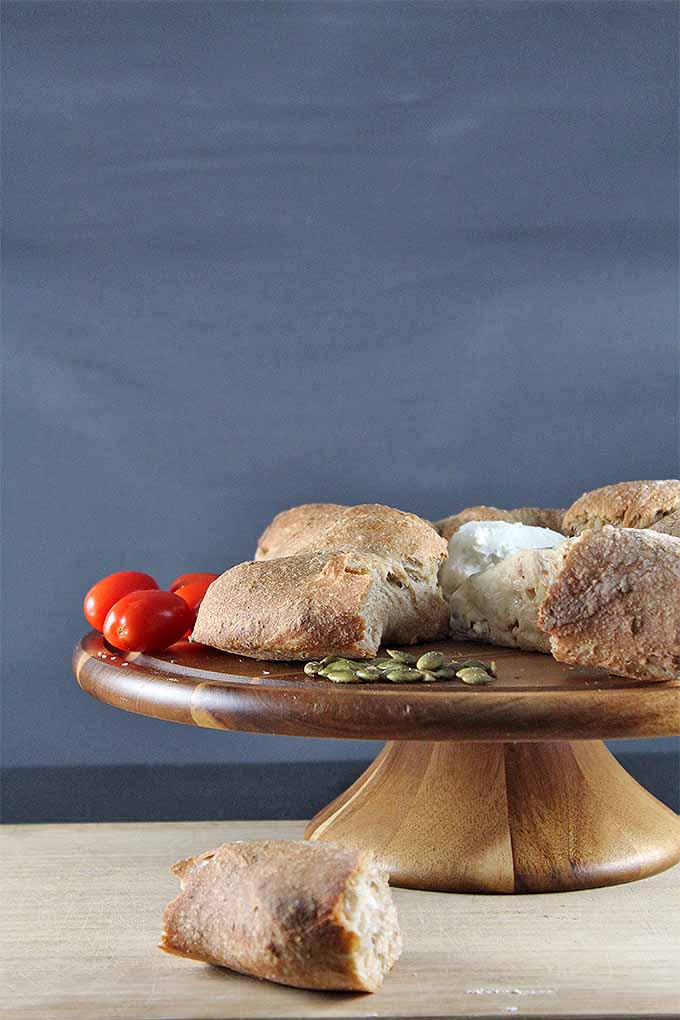
While my sourdough recipe is ideal for baguette making, you could use my basic bread recipe instead, if you’re in a rush.
Shaping This Unique Loaf
To shape a baguette, start by turning your dough out onto a floured counter. Fold it in half to create a rectangle.
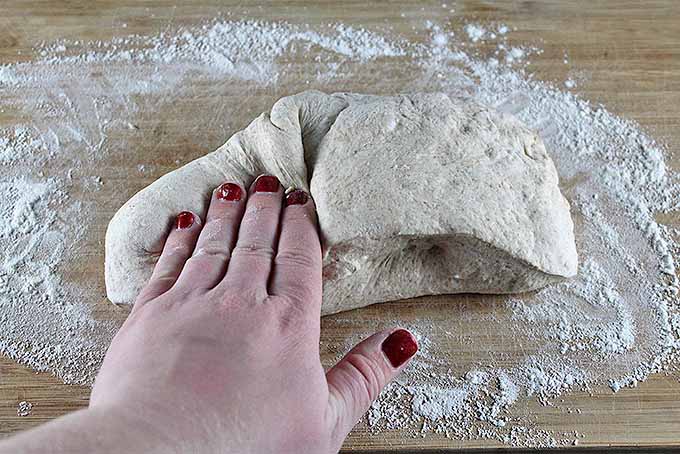
Press each of the top corners in, then fold the top third over, pressing in to seal the seam against the top of the dough.
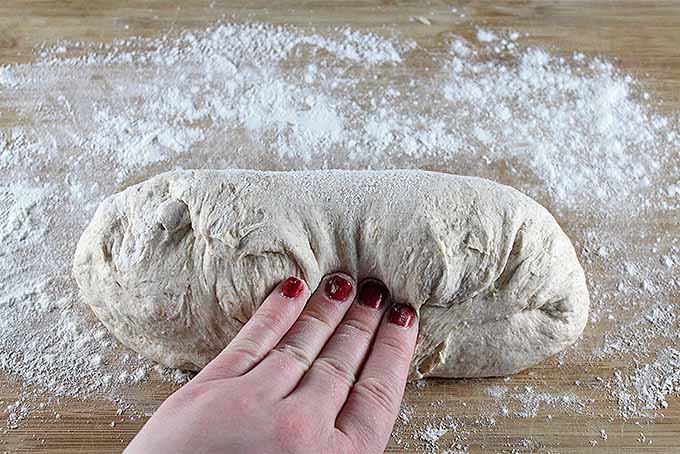
Fold in half again at the seam, and press the bottom together to seal.
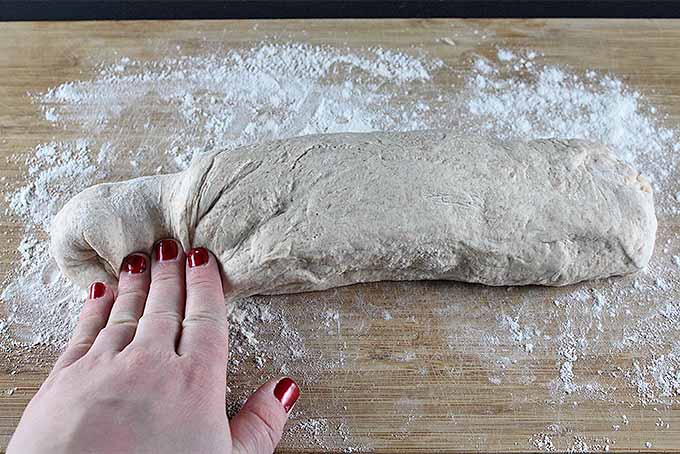
Roll against the counter to lengthen the loaf.
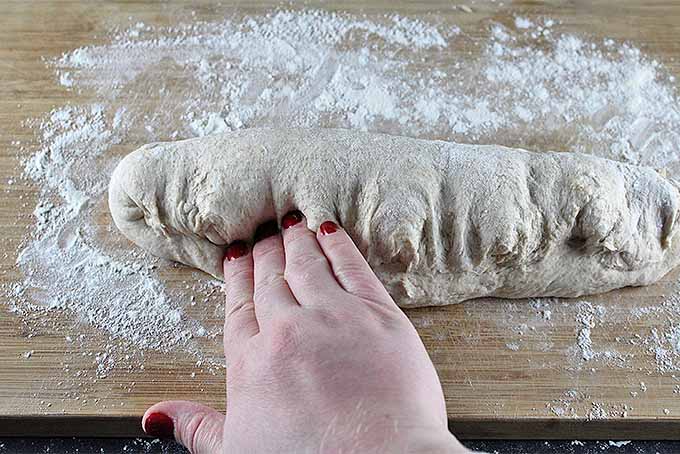
Let the dough rest for ten minutes, then repeat to lengthen the dough again.
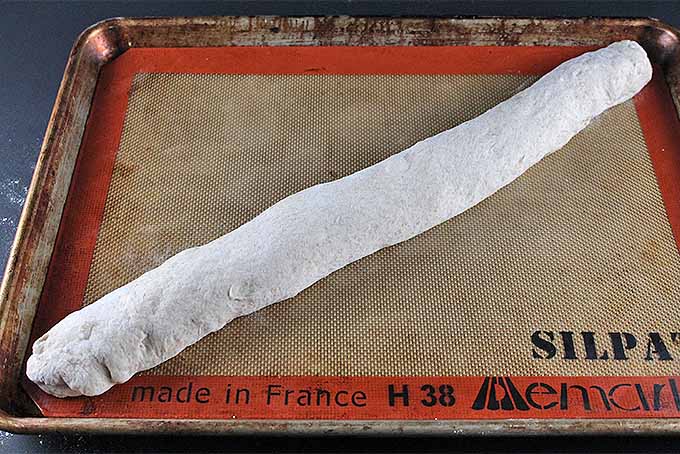
Let the dough rest a second time, then repeat once more to lengthen to the size of your baking sheet.
Transfer to a baking sheet and let proof until you can press the surface with a fingertip and the indentation slowly returns to place.
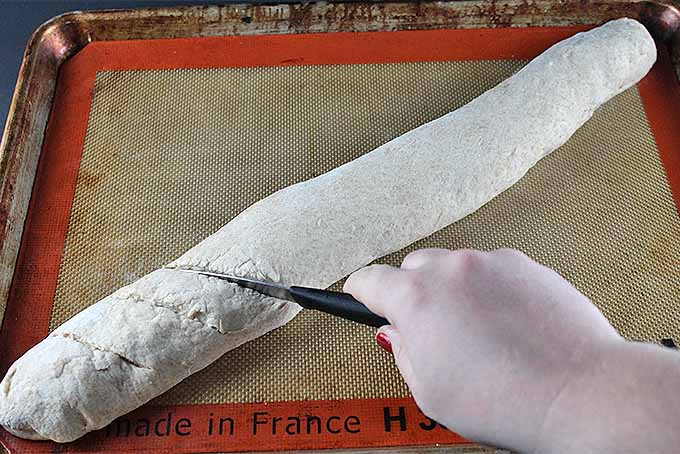
Slice slits into the top of your loaf, to allow steam to escape during baking. This can be done with a baker’s lame, or a sharp knife.
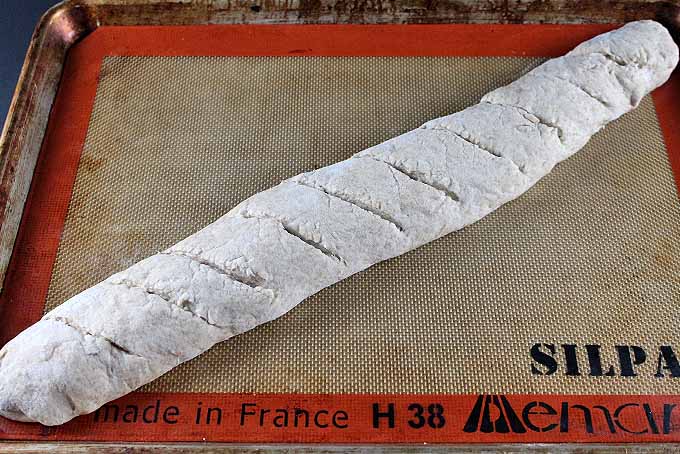
Bake according to the recipe directions.
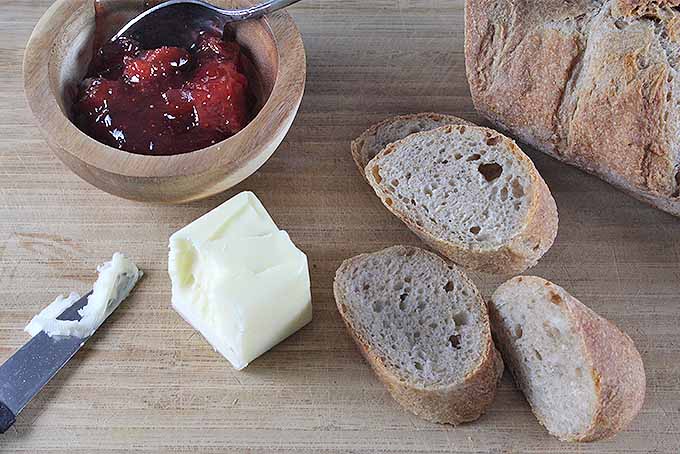
Turning It into an Epi
To turn your baguette into an epi, follow the above steps until you’ve transferred your baguette to a baking sheet.
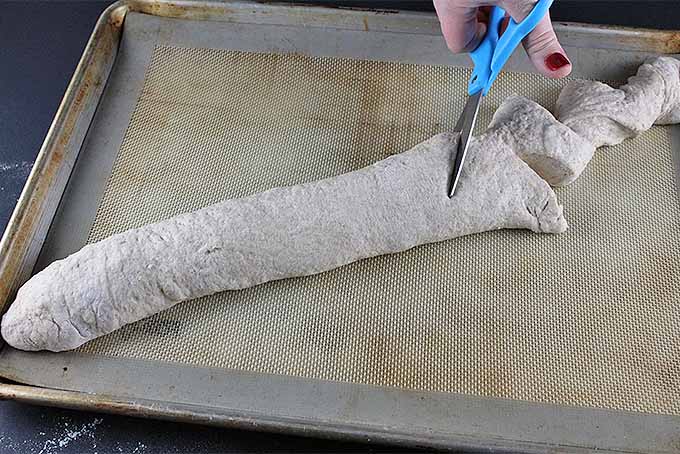
Using kitchen shears (or well-cleaned scissors!), slice the dough 2/3 deep.
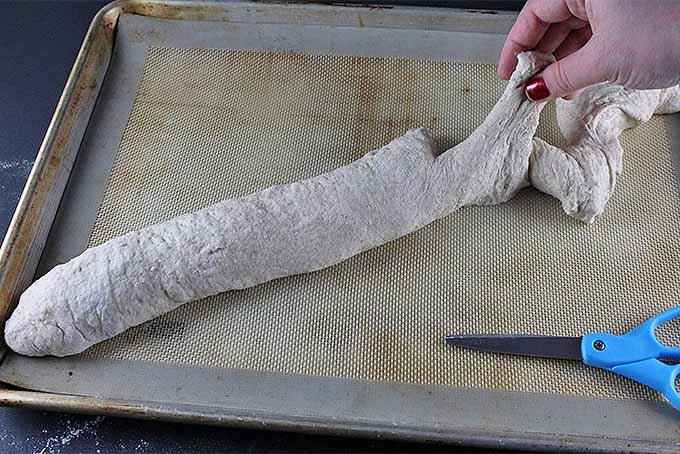
Turn the sliced sections on their side, alternating rotations to the right and left.
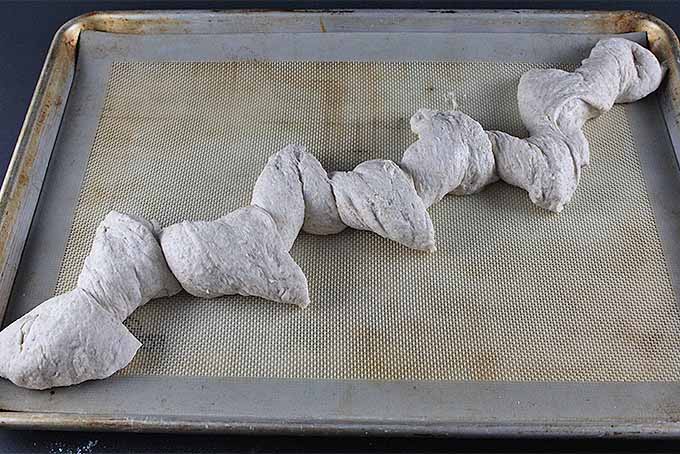
You can bake the epi as is, or you can turn the two ends together to create a wreath.

Proof and bake according to your recipe directions.
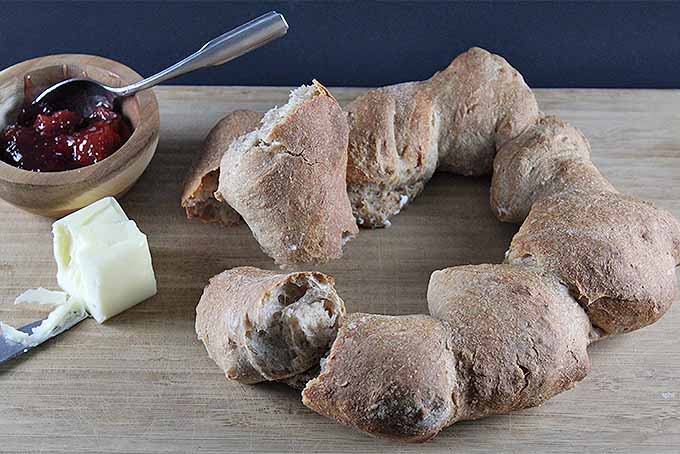
For more ideas and instructions to create a variety of shapes with your bread dough, check out my guide to shaping.
Bake Up a Fresh Loaf Today
You’re sure to impress your family or your guests the next time you bake them this beautiful bread. It’s the perfect addition to a cheese board, piping hot pot of soup, or as the base for our Argentine choripan sandwich.
Even better, bake it and serve it up with your favorite French cooking!
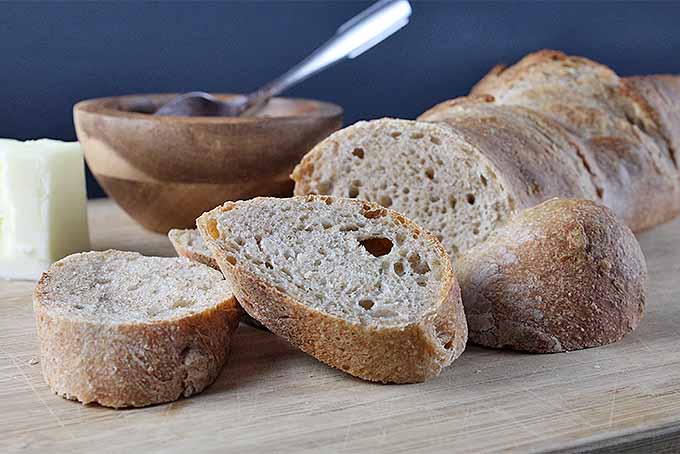
Have you ever tried making a baguette before? What about the beautiful epi? Let me know how it turned out in the comments below!
Photos by Kendall Vanderslice, © Ask the Experts, LLC. ALL RIGHTS RESERVED. See our TOS for more details.
About Kendall Vanderslice
Kendall’s love of food has taken her around the world. From baking muffins on a ship in West Africa and milking cows with Tanzanian Maasai, to hunting down the finest apfelstrudel in Austria, she continually seeks to understand the global impact of food. Kendall holds a BA in Anthropology from Wheaton College and an MLA in Gastronomy from Boston University, and has worked in the pastry departments of many of Boston’s top kitchens. Based in Somerville, Massachusetts, Kendall helps to run a small community supported bread bakery and writes about the intersection of food, faith, and culture on her personal blog, A Vanderslice of the Sweet Life.


